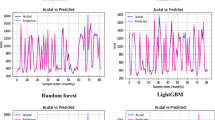Abstract
The forecast of passenger demand in Revenue Management is usually based on historical booking data that reflects the number of sales rather than true demand which is constrained by booking limits. That is why the process of demand forecasting under such circumstances is called unconstraining. The goal of every unconstraining approach is to get empirical or theoretical estimation of true demand. The application of the maximum likelihood method to unconstraining problems in Revenue Management is advocated in the article based on the construction of the distribution function for the censored demand depending on availability of the censoring information. Numerical results are presented on comparative analysis of existing unconstraining methods and the method used in the article. It is demonstrated that maximum likelihood method proves to be more efficient in case of high percentage of censoring. Another important advantage of the method connected to the fact that it enables one to process the situation of censoring information incompleteness when some elements of the observed sample data are known to be censored or not and for the others this information is not available. Mathematical computer environment Wolfram Mathematica has been used for obtaining all the numerical results presented in the article.

















Similar content being viewed by others
References
Aranda-Ordaz, F.J. (1987) Relative efficiency of the Kaplan-Meier estimator under contamination. Communications in Statistics-Simulation and computations 16 (4): 987–997.
Davison, A.C. (2008) Statistical Models. Cambridge University press.
Guo, P., Xiao, B. and Li, J. (2012) Unconstraining methods in revenue management systems: Research overview and prospects. Advances in Operations Research 2012 (2012): 1–23.
Harris, J.W. and Stocker, H. (1998) Handbook of Mathematics and Computational Science. New York: Springer-Verlag.
Heitjan, D.F. (1994) Ignorability in general incomplete-data models. Biometrika 81 (4): 701–708.
Hopperstad, C. (1995) An alternative detruncation method. Boeing Commercial Aircraft Company Internal Document, Boeing, Renton, Washington DC.
Kaplan, E.L. and Meier, P. (1958) Nonparametric estimation from incomplete observations. Journal of the American Statistical Association 53 (282): 457–481.
Klein, J.P. and Moeschberger, M.L. (1989) The robustness of several estimators of the survivorship function with randomly censored data. Communications in Statistics-Simulation and computations 18 (3): 1087–1112.
Klein, J.P. and Moeschberger, M.L. (2005) Survival Analysis. New York: Springer.
Lapina, M.G. and Fridman, G.M. (forthcoming) Relative Asymptotic Efficiency of the Kaplan-Meier and Maximum Likelihood Methods for Demand Unconstraining Problems. Finance and Business. Moscow, Russia: Prospect Publishing House.
Lee, E.T. and Wang, J.W. (2003) Statistical Methods for Survival Data Analysis. 3rd edn. Hoboken, NJ: John Wiley & Sons.
McLachlan, G.J. and Krishnan, T. (1997) The EM Algorithm and Extensions. New York: Wiley.
Meier, P., Karrison, T., Chappell, R. and Xie, H. (2004) The price of Kaplan-Meier. Journal of the American Statistical Association 99 (467): 890–896.
Miller, R.G. (1983) What price Kaplan-Meier? Biometrics 39 (4): 1077–1081.
Miller, R.G. (2011) Survival Analysis. 2nd edn. Hoboken, NJ: John Wiley & Sons.
Salch, J. (1997) Unconstraining passenger demand using the EM algorithm, in Proceedings of the INFORMS Conference, Dallas, TX.
Talluri, K. and van Ryzin, G.J. (2004) The Theory and Practice of Revenue Management. Boston, MA: Kluwer Academic Publishers.
Tukey, J.W. (1977) Exploratory Data Analysis. Reading, MA: Addison-Wesley, pp. 39–43.
Weatherford, L.R. and Pölt, S. (2002) Better unconstraining of airline demand data in revenue management systems for improved forecast accuracy and greater revenues. Journal of Revenue and Pricing Management 1 (3): 234–254.
Zeni, R.H. (2001) Improved forecast accuracy in revenue management by unconstraining demand estimates from censored data, Ph.D. thesis, Rutgers University, Rutgers, NJ.
Author information
Authors and Affiliations
Corresponding author
Rights and permissions
About this article
Cite this article
Fridman, G., Lapina, M. Maximum likelihood approach for demand unconstraining problem with censoring information incompleteness. J Revenue Pricing Manag 15, 37–51 (2016). https://doi.org/10.1057/rpm.2015.23
Received:
Revised:
Published:
Issue Date:
DOI: https://doi.org/10.1057/rpm.2015.23




